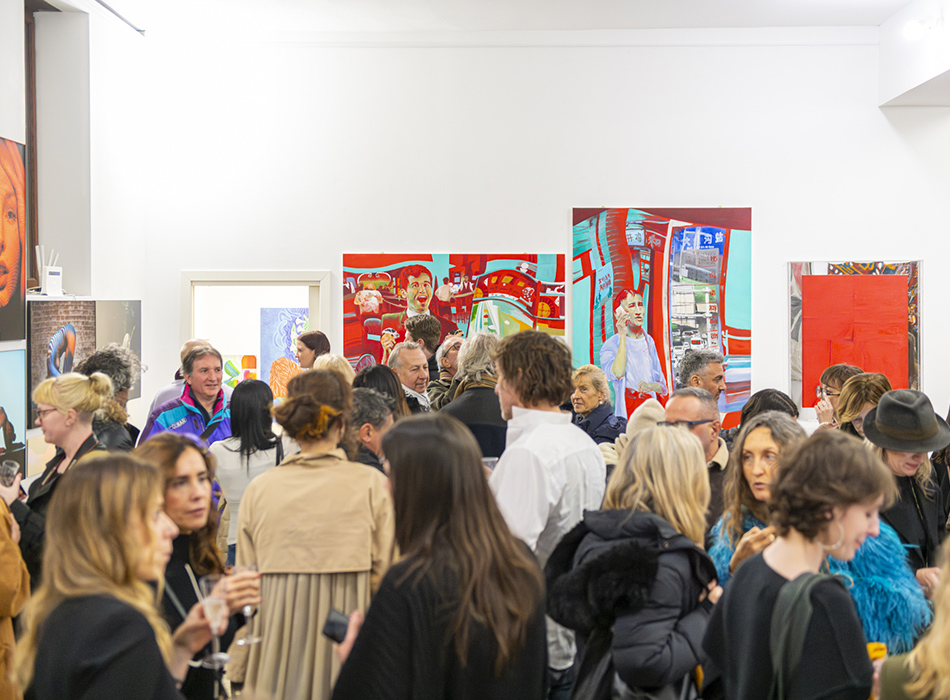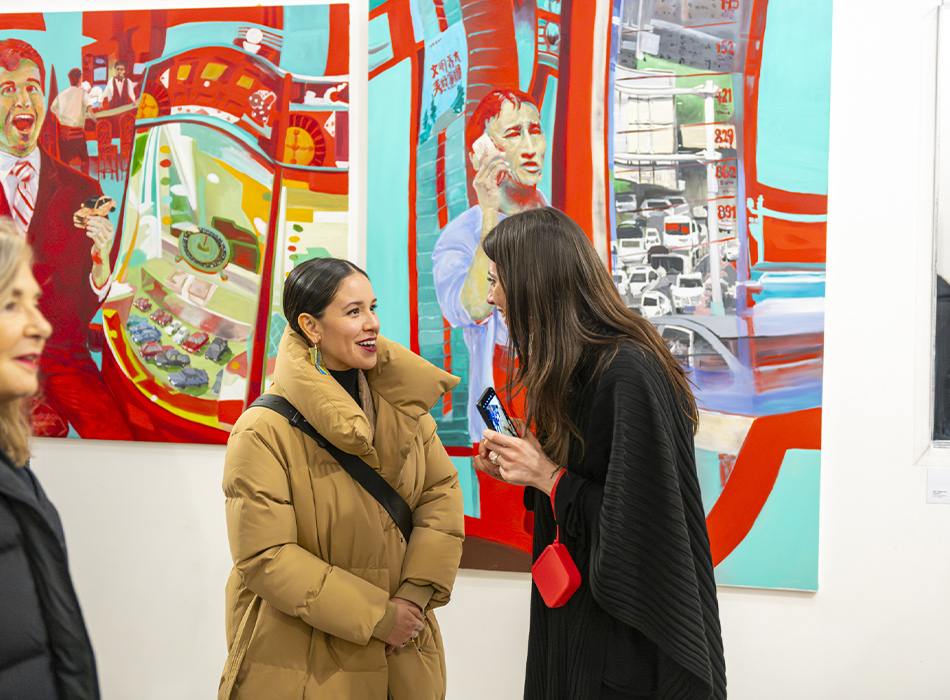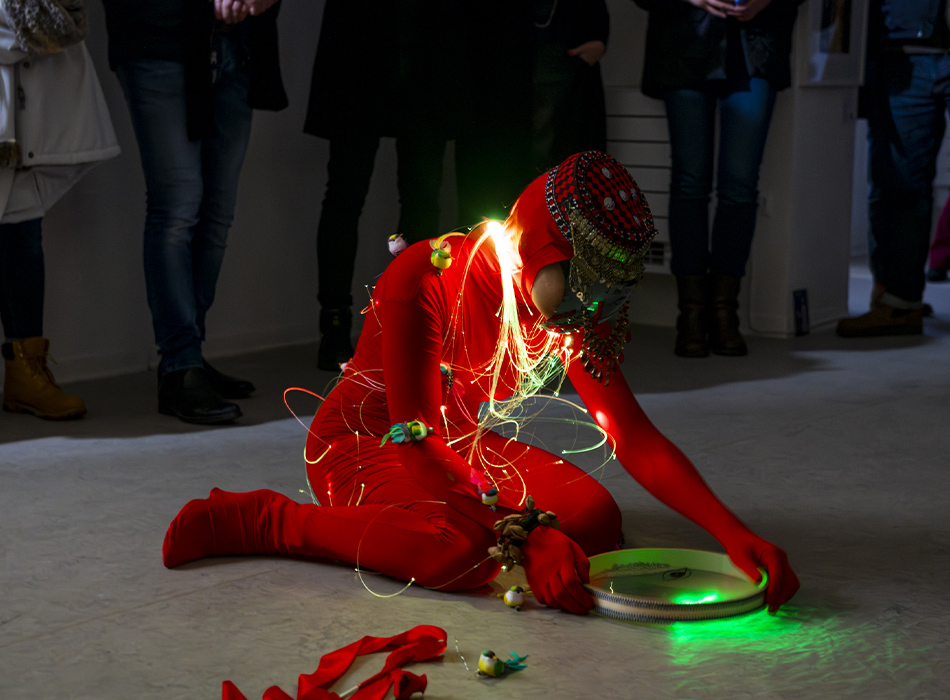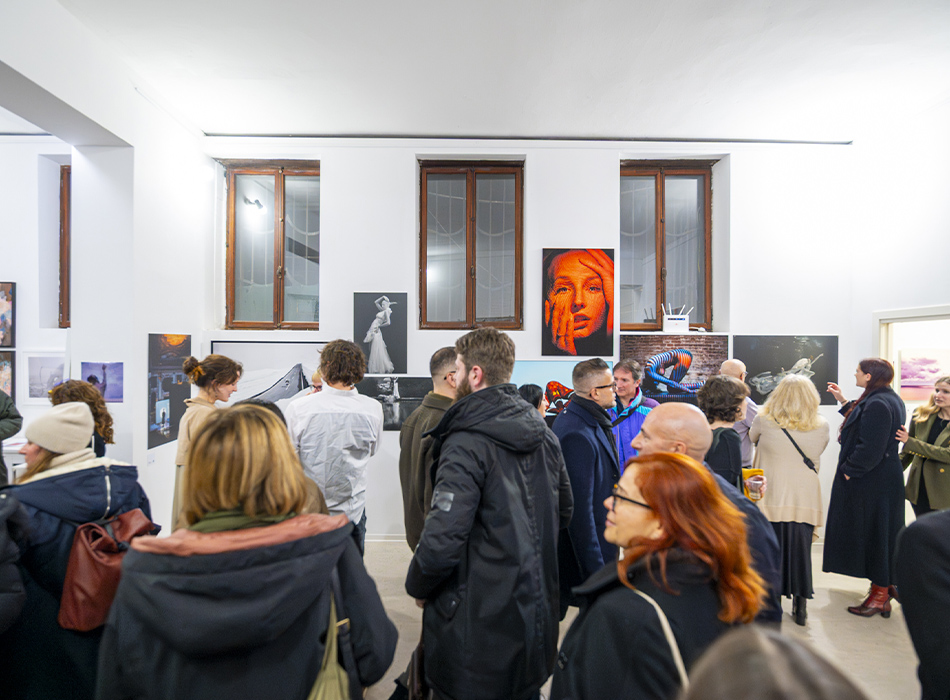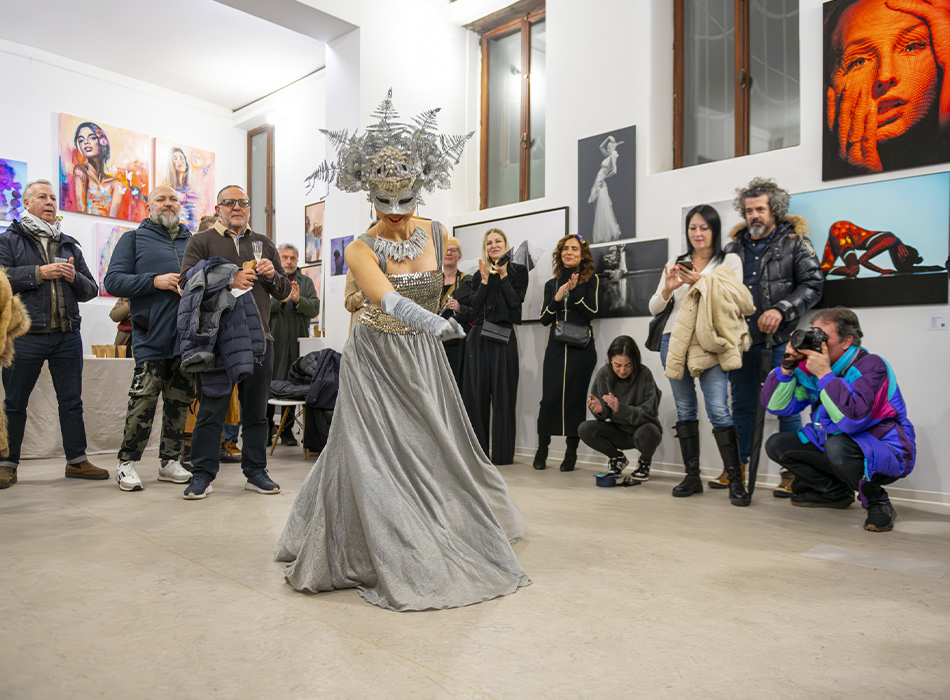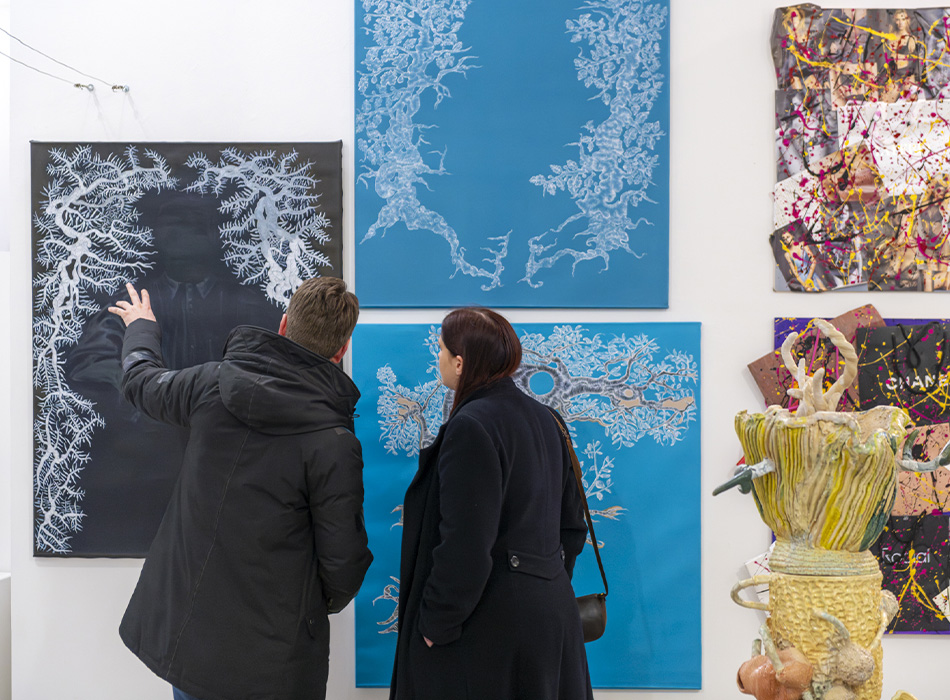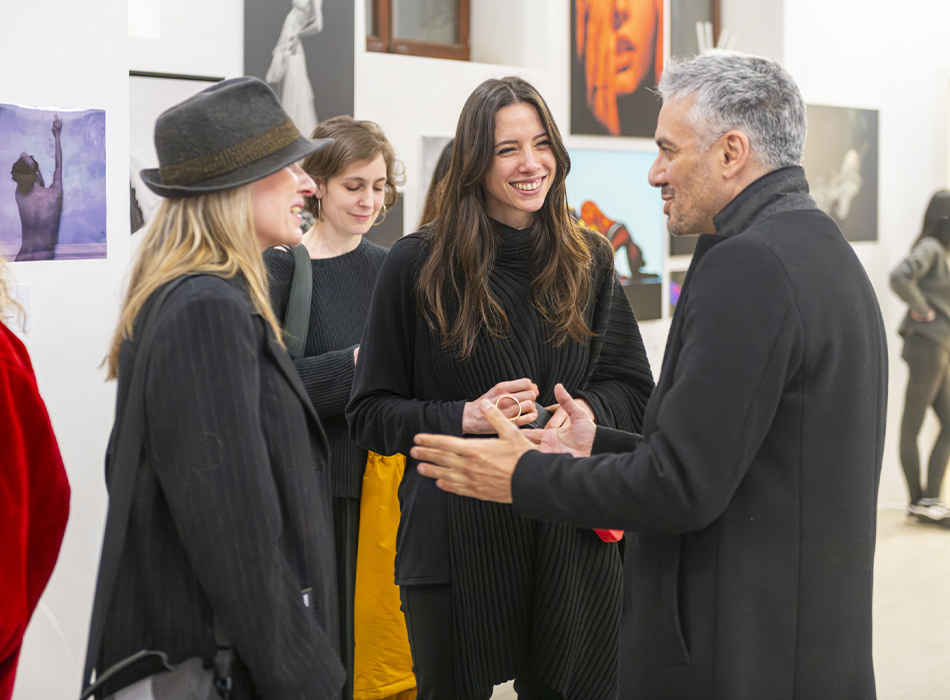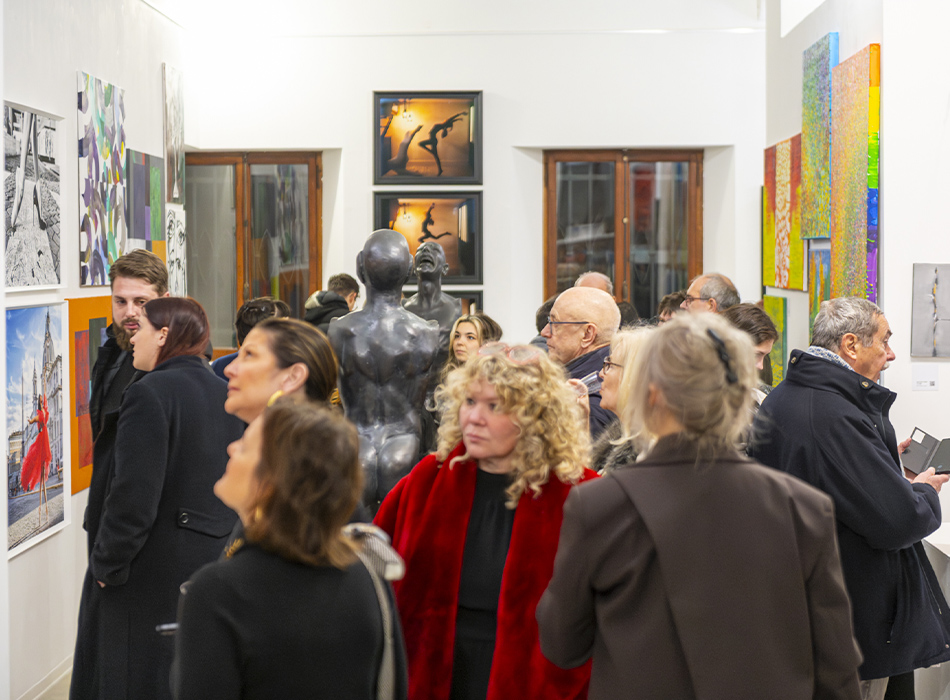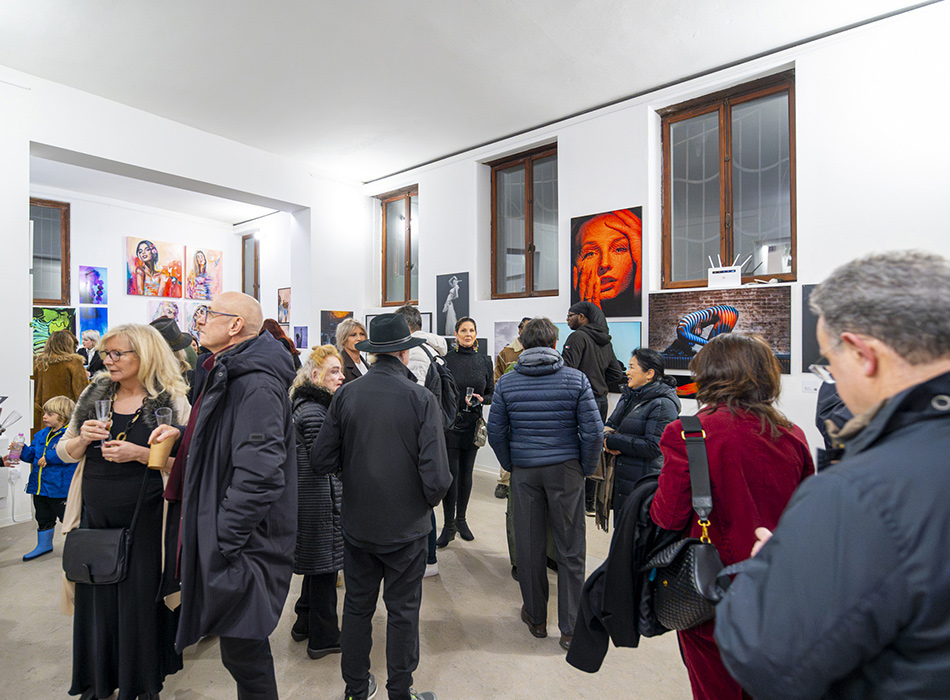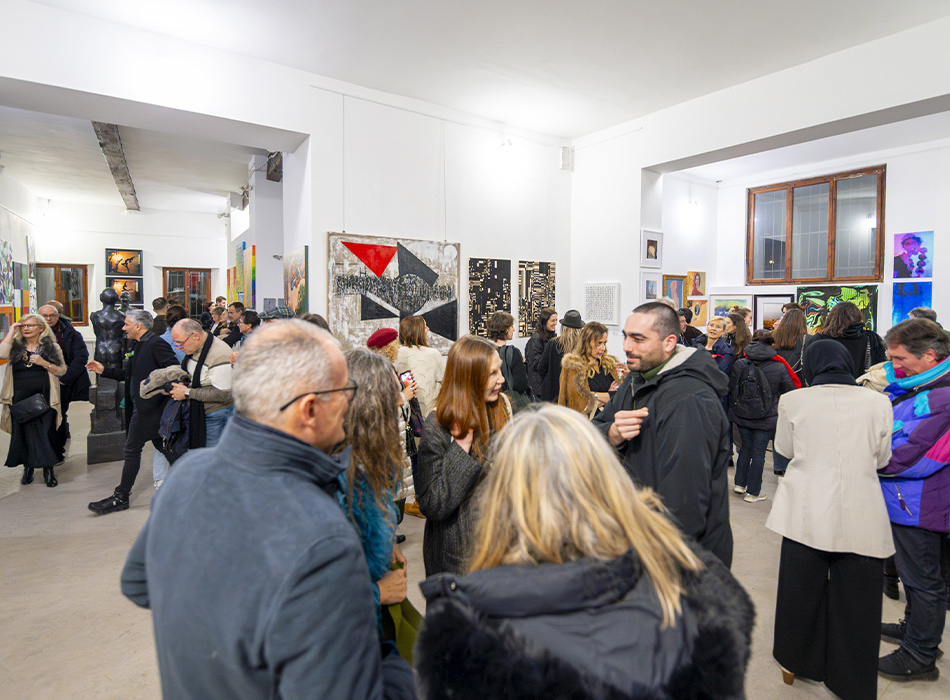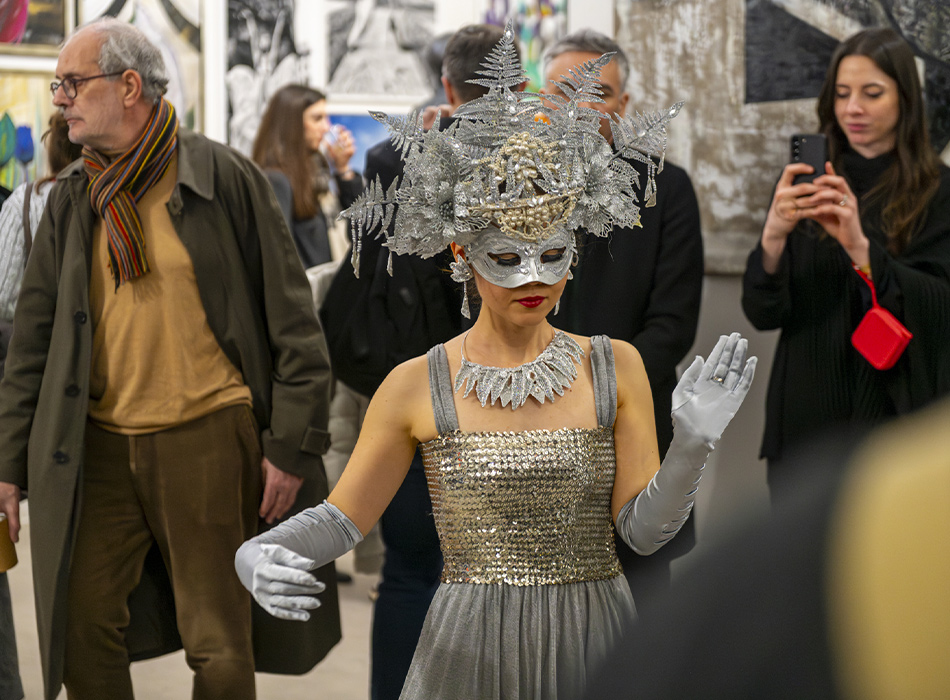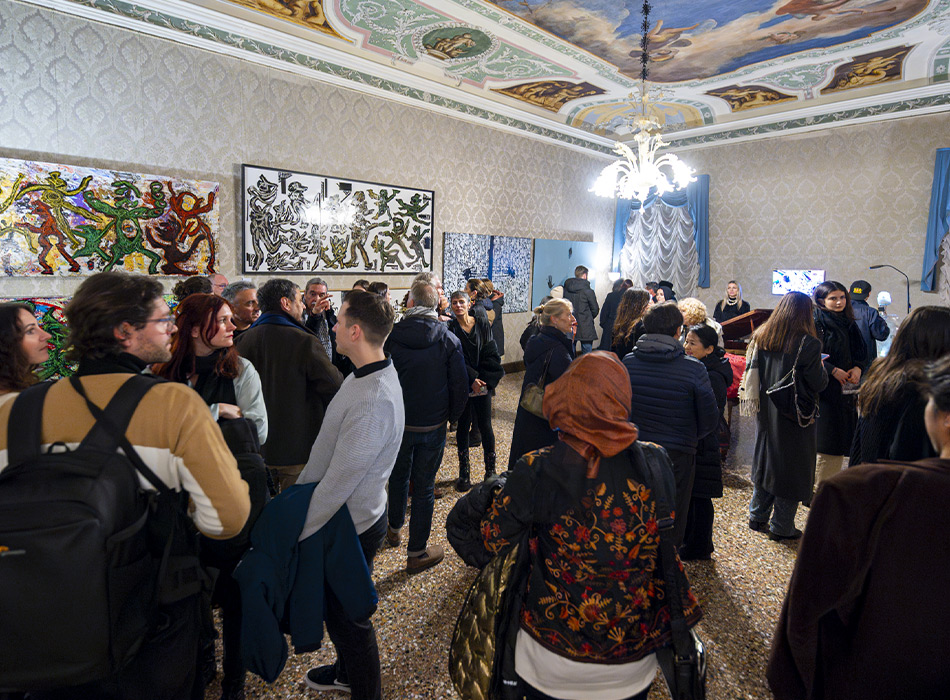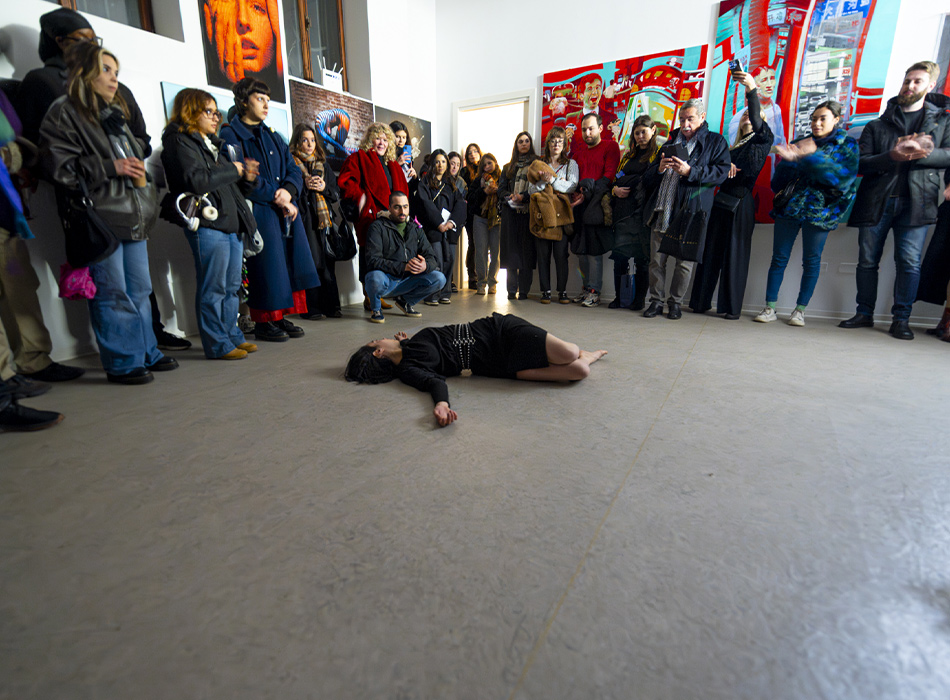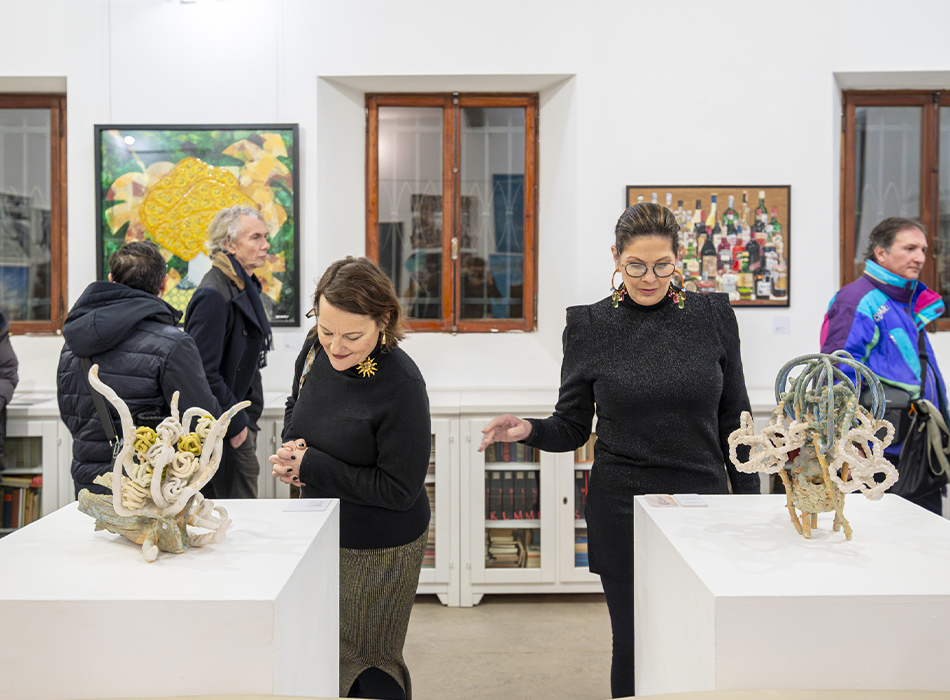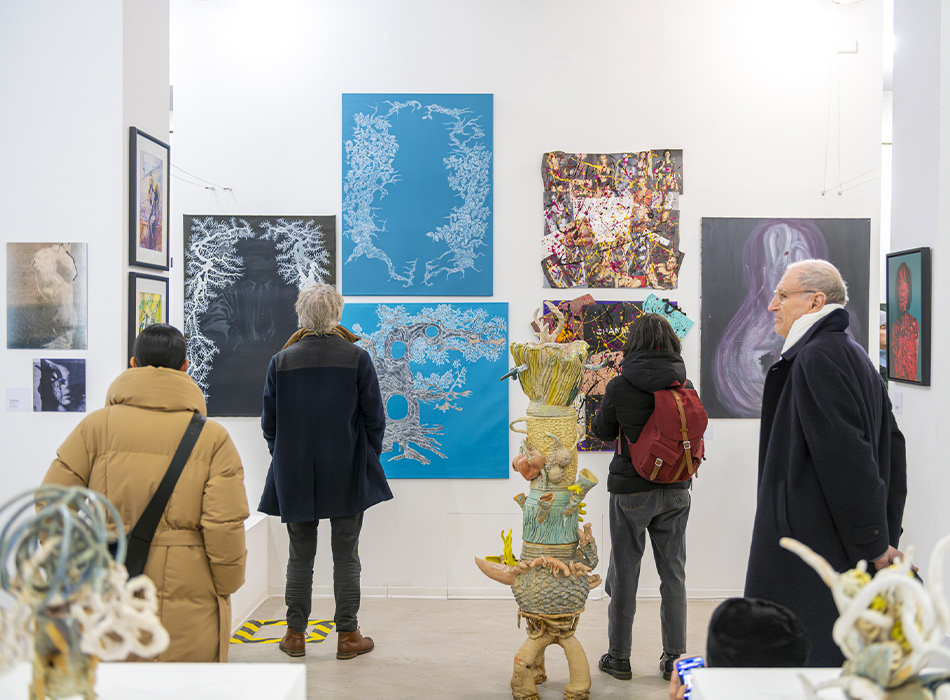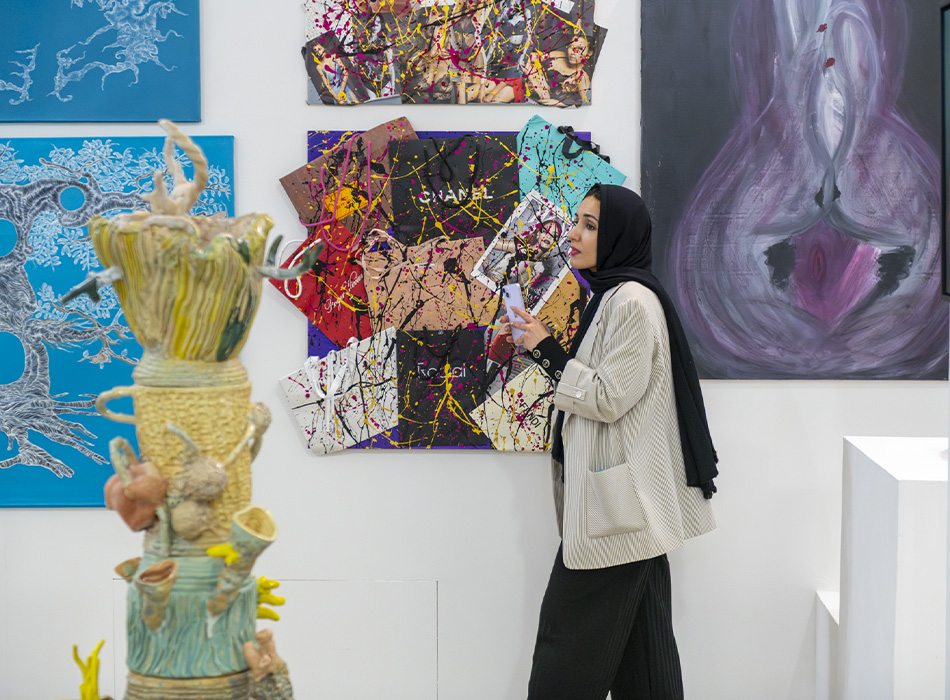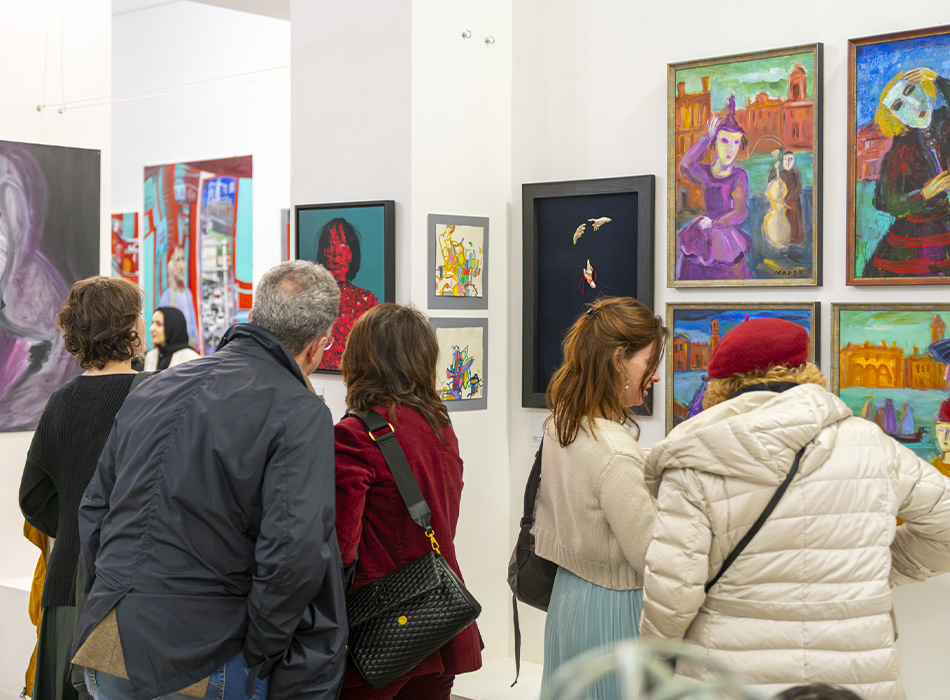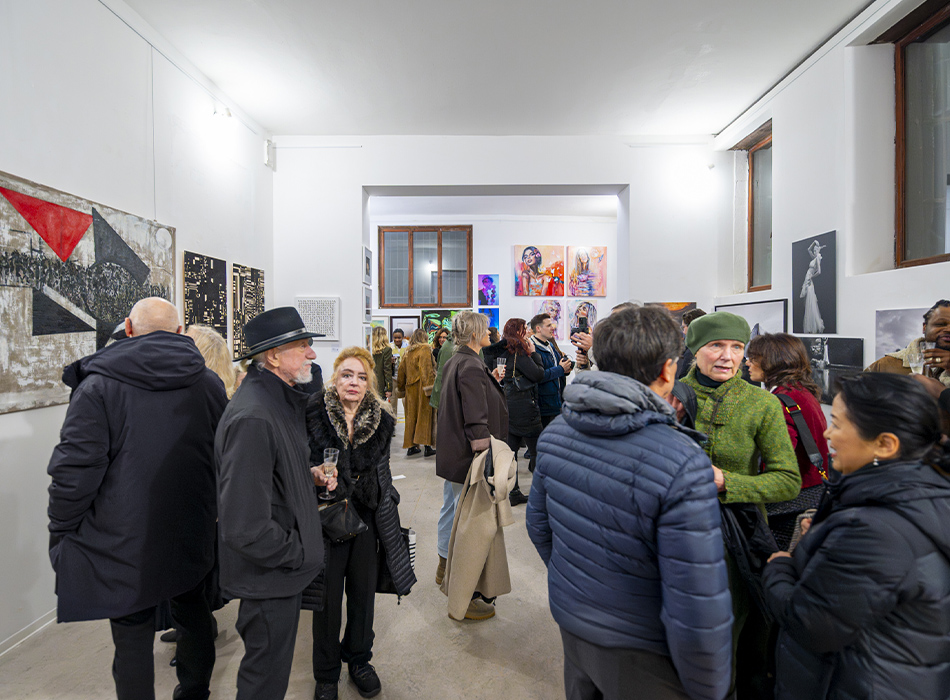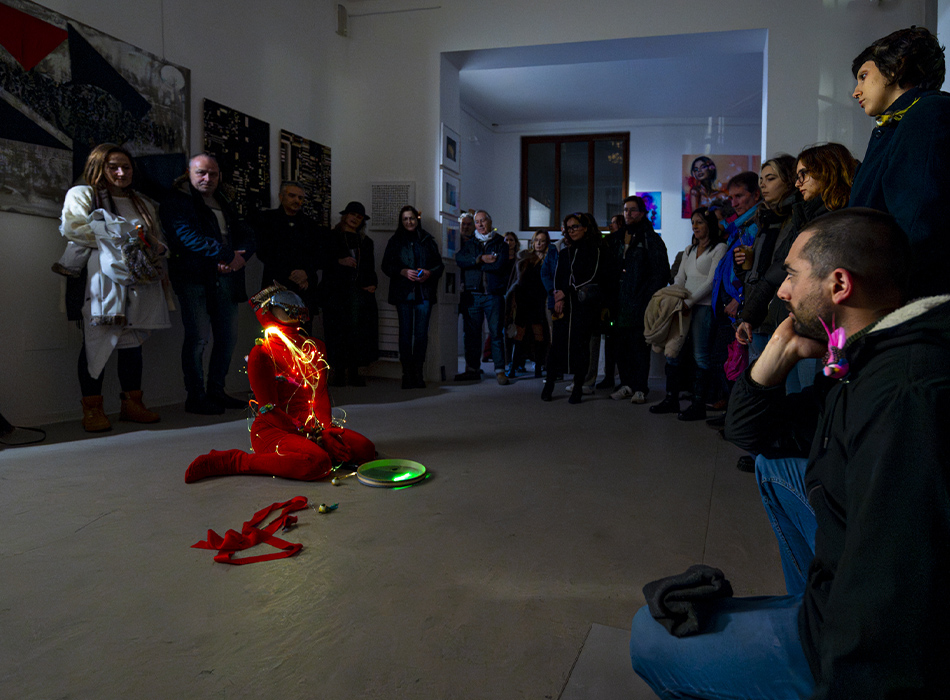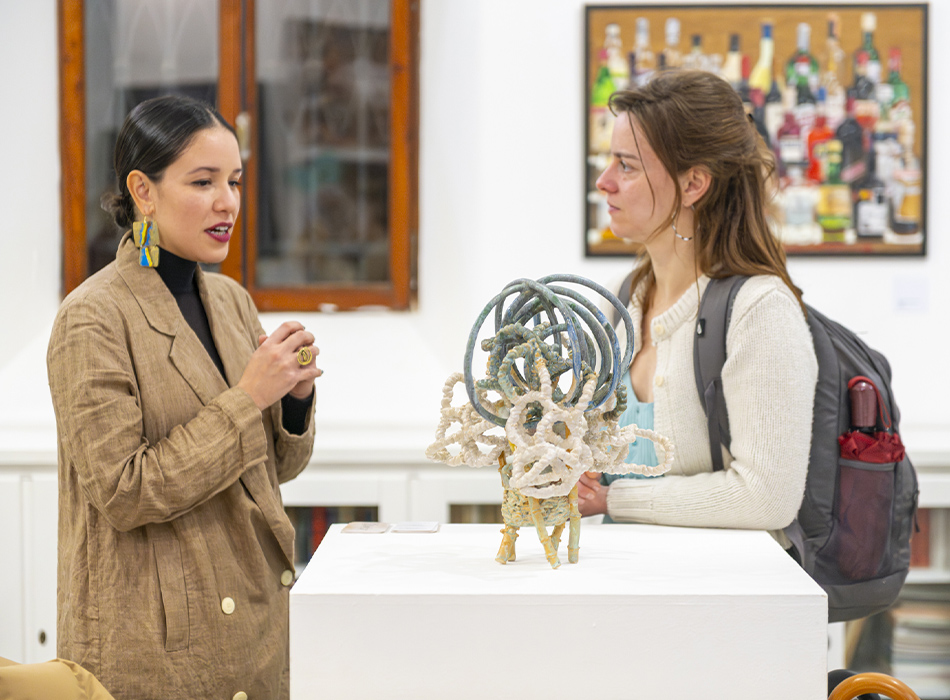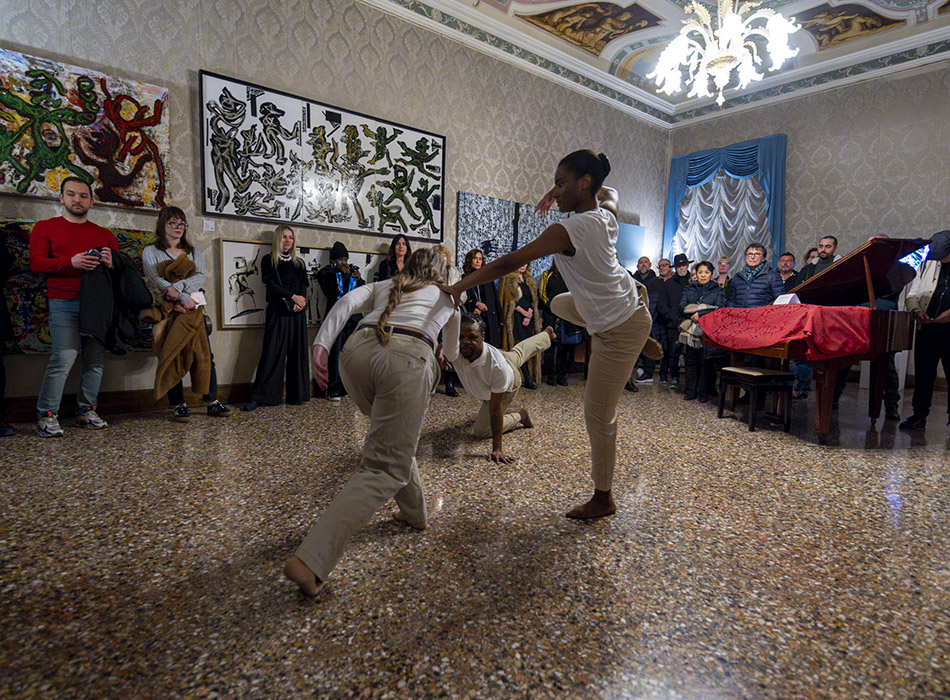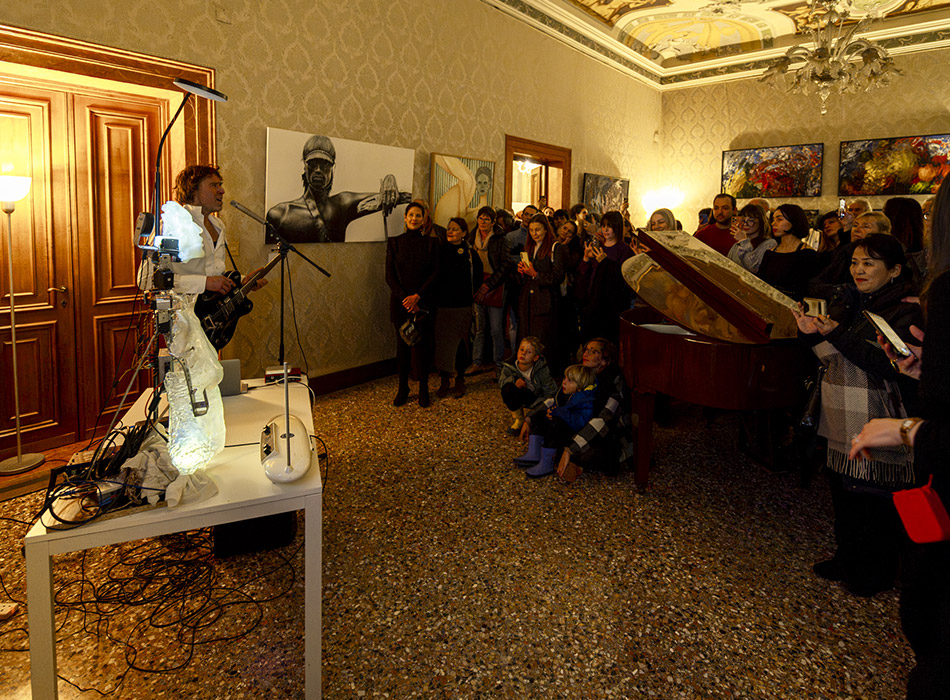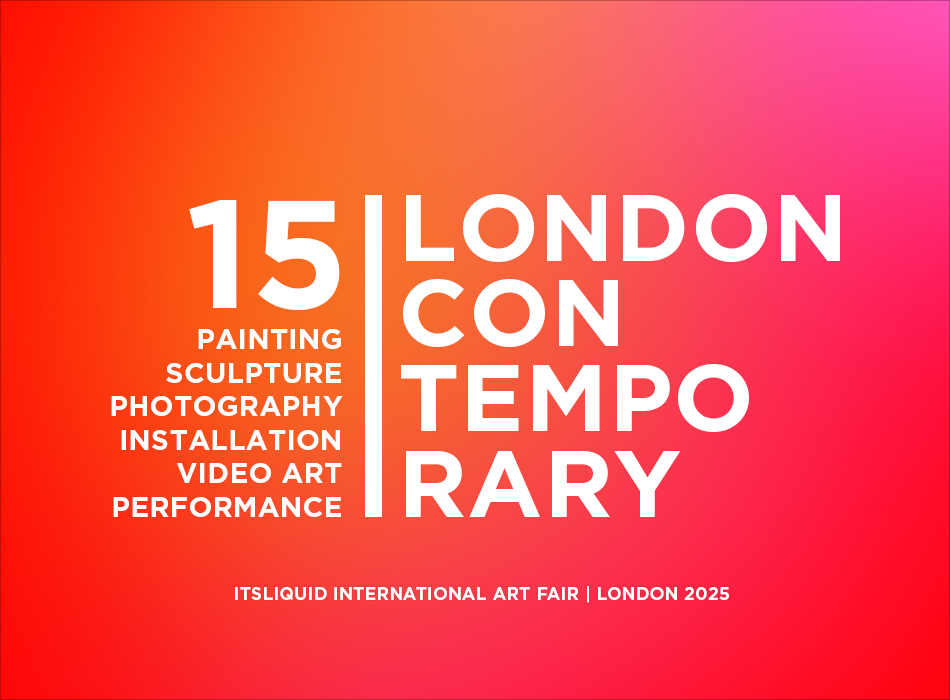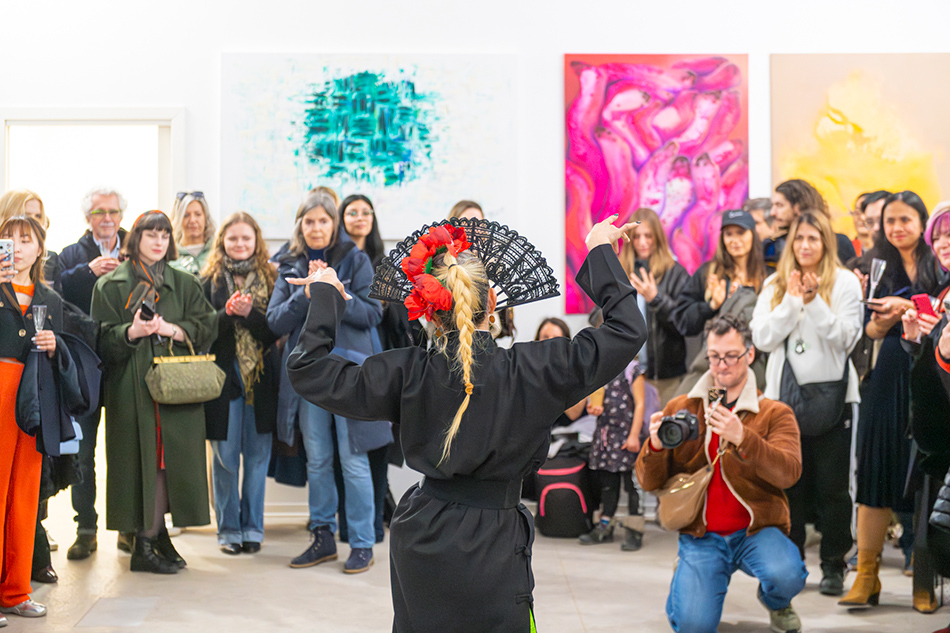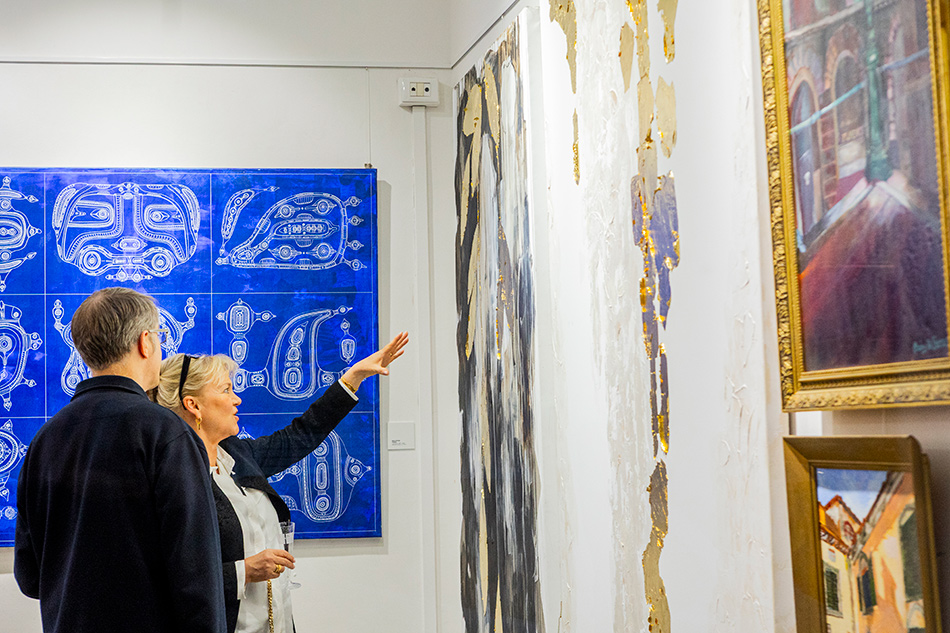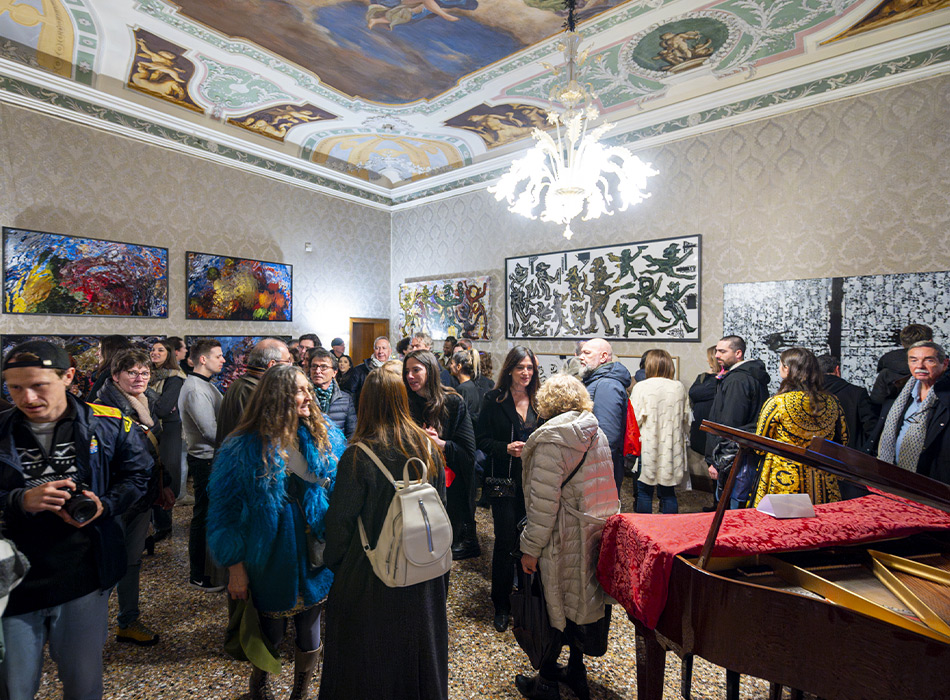
EXHIBITION REVIEW
THE BODY LANGUAGE 2025
February 14 – 28, 2025
Palazzo Albrizzi-Capello, Venice
ITSLIQUID Group is pleased to announce the great success of THE BODY LANGUAGE 2025, an international exhibition of photography, painting, video art, installation/sculpture, and performance art. The exhibition will take place in Venice at Palazzo Albrizzi-Capello until February 28, 2025, during one of the most spectacular and unique periods of the year: the magical Venice Carnival.
Click here to read more about the press release
Click here to see the photo full reportage
THE BODY LANGUAGE analyzes the hidden parts of our identities, through an immersive experience inside the fascinating universe of the complex labyrinths of our consciousness. The human body is a changing system that connects us with other bodies and spaces to perceive the surrounding reality; a strong communication system with its own language and infinite ways of expression.
We invited all the artists to immerse themselves in a multisensory exploration and to share their personal artistic research through any kind of media, from painting to sculptures and installation, from photography to video art and live performance.
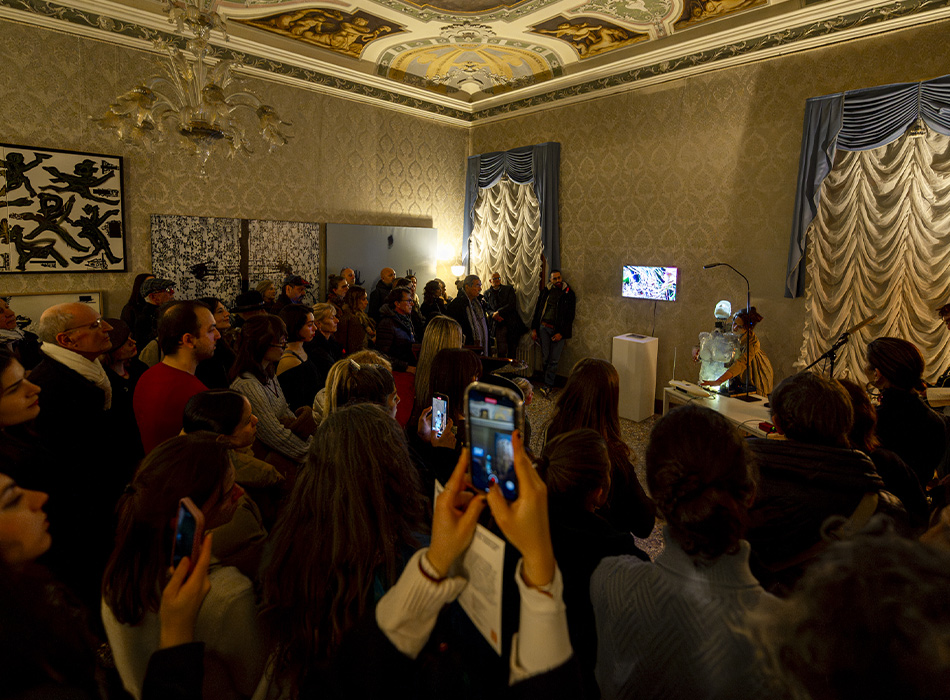
With more than 90 artists selected, coming from over 25 countries, THE BODY LANGUAGE 2025 presented an extraordinary showcase of creativity, especially enriched by the remarkable collaboration between ITSLIQUID Group and Sedition x Muse Frame, which brought works by pioneers of video art. Among the standout works, the partnership showcased Bill Viola’s “A Phrase from Chris”, a meditative piece from his Transfigurations series. Viola, a true pioneer of video art, used his signature slow-motion imagery to evoke themes of transformation and the passage of time, mirroring the fluidity of Venice’s canals. Refik Anadol’s “Melting Memories I” was equally mesmerising, a data-driven investigation of memory and impermanence: by converting neurological data into shifting digital landscapes, Anadol created an immersive meditation on time and human consciousness, resonating deeply with the event’s theme. The generative work of Andreas Nicolas Fischer also found a powerful place in this context: his work “VOID 2K18 05”, driven by algorithmic processes, challenged the boundaries of artistic creation, offering a dynamic visualization of movement, evolution, and the interplay between digital and physical realms. Further expanding this narrative, Amine Rachad and Eteam contributed compelling perspectives on emotion, memory, and the fragility of existence. Rachad’s “Emotion 05” invited introspection through digital abstraction, while Eteam’s “Greenhouse”, from their Waterweights series, poetically examined time’s impact on personal and collective identity.
Displayed within the Renaissance splendour of Palazzo Albrizzi-Capello, the exhibition fostered an immersive exchange between past and present, where digital innovation and classical artistry coexisted in striking contrast, enriching the exploration of body, environment, and movement. A standout example was Milica N. Popovic’s work, “Creator in Me”, which exquisitely embodied her exploration of the body as a powerful communicative tool. Through gestures, movements, gazes, and touch, her piece highlighted the profound connections that unite individuals on a deeper level.
Among the photographers selected, the work by Ukrain-based Myroslava Astion stood out reflecting on the expressive power of body language, creating images that intuitively convey the connection between one’s awareness and reality. Always working in the photography domain, Claudio Koporossy from Switzerland presented four large images all about the theme of fluidity. For over a decade, Koporossy has immersed himself in the theme of water, analyzing its diverse facets. The outcome was a group of works revolving around the theme of perception: irregular streaks of colours juxtaposed and ended up recreating a sense of being submerged; viewers found themselves as if under the surface, so to speak, and were asked to find new feet within the frames of the pictures on display.
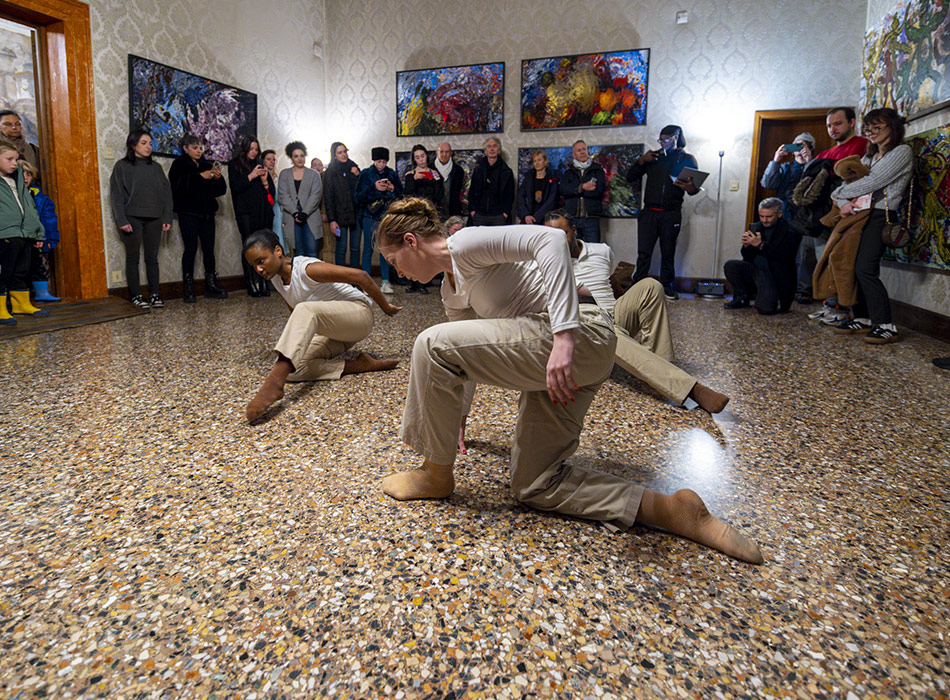
A different yet piercing research on colour could be found in the creations by Roma Wojtczak: through the study of flowers, a traditional painting subject, Wojtczak powerfully connected femininity and nature. A flower is more than just a blossom – it is a symbol of the female body, celebrating its beauty, strength, and sensuality. The same topic is also imbued in the work by the Italian painter Sabrina Fraschini: her pieces are deeply pervaded by a sense of peaceful transfiguration of a woman’s body. Viewers could sense something as big as the pregnancy taking place, yet only coloured through shadows and bands, as if to point to the spiritual mystery of birth femininity carries within material bodies.
French sculptor, Leïla Helmstetter, provided a representation of the main concept centred around the body of the earth. With a background strongly influenced by her childhood memories of Africa and her studies as a landscape architect alike, Helmstetter’s work unfolded as a vertical structure where each “storey/level” represents a different stage of evolution: the entire process of life born in front of visitors, starting from lower roots, getting through an underwater environment and up to the earth’s surface and beyond. International painter and mural artist Paul Ygartua participated with a piece resonating with a personal experience in Africa too. The portrayal of a warrior from the Sumburu tribe aimed to bestow the divinity and masculinity of the subject to symbolise strength and emotional endurance.
Jacquiline Louise Holm from Denmark, confronted herself directly with the main concept of the body: her 4-picture series delved into the delicate tension between presence and absence, desire and denial. Through double-exposure photography and poetic fragments, she points to what is revealed and what remains concealed. Each photograph is a space where the body is both subject and statement, both vulnerable and untamed. What one sees is only part of the story; the rest lingers, waiting to be felt. “Traumatismes”, a piece from the video artist Katharina Gross, aimed at creating a sense of spatial circular movement and flow of motion: the artist used creative means such as variations and repetitions of motions, and rhythms, but also changes of direction. Musically and visually, Traumatismes set the viewer and listener in a “state of mind” in which inner images were evoked or could arise.
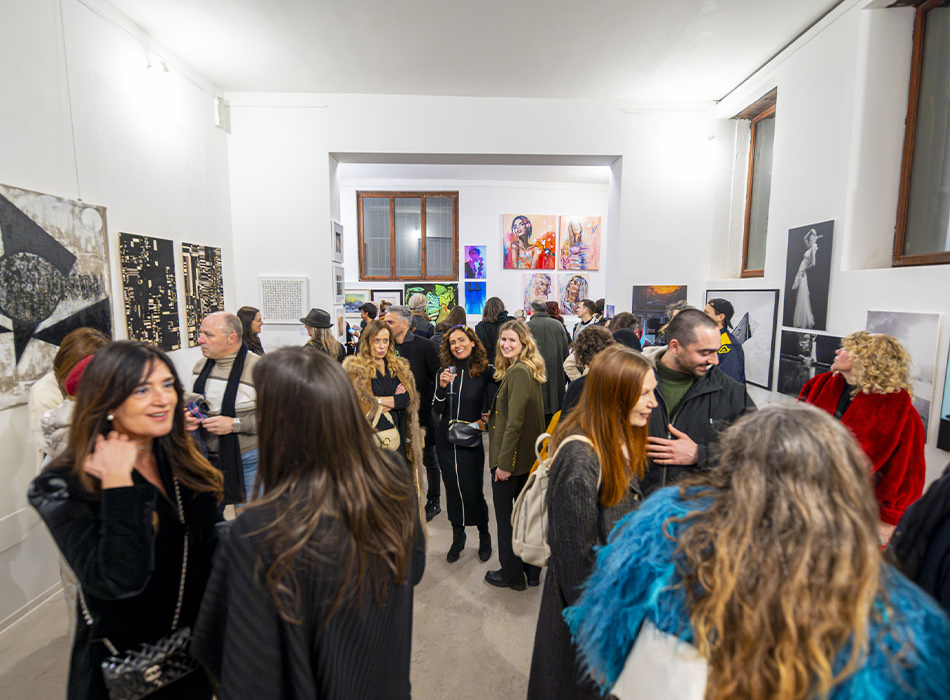
The 2025 edition of THE BODY LANGUAGE profoundly explored the relationship between body, space, and artistic expression. This synergy was further amplified by the captivating performances at the opening event, offering an immersive and unforgettable journey.
Among the highlights, Mobina Nouri’s “Between Realities” stood out as a compelling blend of movement, sound, and digital interaction. Examining the influence of technology on behaviour, body language, and self-perception, her performance invited the audience to reflect on identity, belonging, and the human condition. This way, Mobina challenged the viewer pushing the boundaries of contemporary performance art. Born from the necessity to explore the universal struggles we face, Riddick Dance’s “Je ne sais pas pourquoi” was an evocative portrayal of resilience and unity. The choreography, marked by fluid lifts, interwoven gestures, and synchronized steps, symbolized collective strength in the face of adversity. Building to a breathtaking crescendo, the dancers supported and uplifted one another, embodying the triumph of solidarity.
A poetics of black and white images is the one chosen by photographer Manuel Kokseder: the work on display played intensely on the almost blinding as well as dominating white background, on which a human body stood out: its motion was enhanced and highlighted by the stretch of highway projecting towards the horizon line; looking at the work, one could but think of how landscapes and pictures are being livened up by human presence, by the language of a body exploring the surrounding spaces. Another outstanding interpretation of the main theme came from Eva Michalikova: the artist was truly drawn to the event since the theme of the event deeply resonated with her inner soul. The three pieces selected for the exhibition perfectly embodied the topic: using the overlapping of materials and visual effects, Michalikova emphasized the social issues related to women’s bodies nowadays. All in all, her images conveyed a strong sense of empowerment made up of complicity, passion, and an unconditional embrace of life and its magic.

Included in the sculpting section, the mixed media assemblage by Francine Judd Stock made quite an impression. In such an arresting sculptural work, two otherworldly beings confront each other in perpetual misrecognition. Drawing inspiration from René Descartes’ “Meditations on First Philosophy,” the piece explored the fundamental question of how humankind can verify the existence of other conscious minds. The juxtaposition of materials – the transparency of glass, the tactile warmth of fur, and the primitive power of the horn – reinforced the tension between perception and reality. Fellow American artist Marina Marza focused, instead, on the theme of masks, specifically Venetian masks during the Carnival celebrations. Her surrealistic depiction of the laguna was accompanied by an unsettling sense of suspension: masks are not just the ones people put on for a masquerade; rather, they are ways to conceal the most important part of the human body, faces, building colourful yet nearly inescapable cages. Within the context of THE BODY LANGUAGE exhibition, this dialogue becomes even more poignant, inviting viewers to reflect on how the body, whether adorned, obscured, or redefined, communicates beyond words.
organized by ITSLIQUID Group
in collaboration with ACIT Venice – Italian-German Cultural Association | GOETHE INSTITUT
curator Luca Curci
project manager Giulia Tassi
project coordinator Amaride Ferrante
artists coordinator Ilaria Parlato
collaborators Yadigar Aksoy, Maria Arban, Anna D’Addabbo, Valentina Minniti, Annachiara Recchia, Vittoria Vallebella
graphic designers Marina Caracciolo, Gemma Laera
supported by Le Centre D’Art | El-Saieh | Lamprechter
VENUE
Palazzo Albrizzi-Capello
Associazione Culturale Italo-Tedesca (ACIT), Cannaregio 4118, Venice
Opening hours | Monday – Friday . 09.30 AM – 05.30 PM



ABOUT US
ITSLIQUID is a web-based information platform, founded in 2001 by Luca Curci, dedicated to the worldwide distribution of information about calls for entries, exhibitions and events at some of the world’s leading art galleries, museums and foundations selected. ITSLIQUID has already built a readership of more than 250.000 qualified subscribers. Among them are architects, designers, artists, collectors, art critics, curators, dealers, and other personalities of the International art, architecture and design world. It provides advertising services, press office services for events and projects, articles and specials published on the website, and media partnership services.
During the last 20 years, ITSLIQUID Group has become a cultural hub for creatives, exhibition spaces, and art lovers. Among our international partners, Art Now Fair, Art Vancouver, Design Tokyo, INDEX Qatar, INDEX Saudi, The Big 5 Construct Dubai, The Big 5 Construct Qatar, Photo LA Los Angeles and international magazines like Art Style. ITSLIQUID Group supports some of the most important no-profit organizations, like UNFCCC – United Nations Framework Convention on Climate Change, SSCS – Sea Shepherd Conservation Society, One Tree Planted, The Ocean CleanUp and Plastic Oceans, with the goal to increase public awareness about environmental issues. Click here to find out more.
ITSLIQUID GROUP includes a section dedicated to the organization of international art events, managing exhibitions of painting, photography, video art, installation and performance; it organizes solo and collective shows, art residencies and international contests. Its object is to use new technologies to globalize the language of art, and to connect artists working in every part of the world.
ITSLIQUID Group manages a variety of art spaces all over the world; among them Palazzo Albrizzi-Capello in Venice and different historical buildings, ELEMENTS Contemporary Art Space in London city centre and other different partners worldwide. Since its beginning, the group has organized more than 250 events all around the world, involving more than 5.000 artists, in more than 60 international venues in Italy, the USA, Canada, the UK, Spain, France, etc. Most of the last events have been realized in museums (CCCB – Centre de Cultura Contemporània de Barcelona in Spain, NCCA – National Center for Contemporary Arts in Moscow, etc.), galleries and private foundations.
ITSLIQUID is based on fluidity, motion, connection and accessibility. Making things easy to do. Welcome.
OUR LOCATION

Palazzo Albrizzi-Capello is one of the most known palaces of the Renaissance in Venice. It is a historical building dating back to the 16th century, and it has been owned by several noble Venetian families, as demonstrated by the frescoed ceilings, the artistic stuccos and the fine furniture that enriches its rooms. The Palace welcomes visitors with its beautiful private garden on the ground floor, and then it gathers the guests in its large first-floor salons, in which past and present dialogue together. The restored Old Masters’ frescoes and the contemporary art masterpieces that are periodically shown in the exhibitions hosted here, make Palazzo Albrizzi-Capello the perfect location for the balance between old and new, between ancient environment and contemporary art, architecture and design.
Today the building is managed by ACIT Venice – the Italian-German Cultural Association – which is considered one of the most important intercultural associations in Europe. Thanks to the ACIT unceasing cultural activity, Palazzo Albrizzi-Capello has nowadays frequent collaborations with the Goethe Institute and with other local and international institutions, maintaining its ancient reputation. Because of these relations, it presents a huge program of memorable art exhibitions, conferences, congresses and concerts. Among the last institutional exhibitions, is its participation in the 58th Venice Biennale with the Guatemala pavilion, the Dominican Republic pavilion and the Grenada pavilion. ITSLIQUID Group already had the pleasure to hold some festivals and exhibitions in Palazzo Albrizzi-Capello, such as MORPHOS Festival and FUTURE IDENTITIES Festival, both in 2014.




Are you an artist, architect, designer? Would you like to be featured on ITSLIQUID platform? Send an e-mail to info@itsliquid.com or fill the form below

